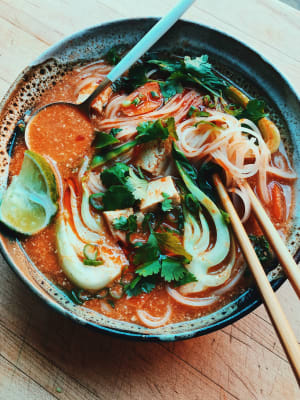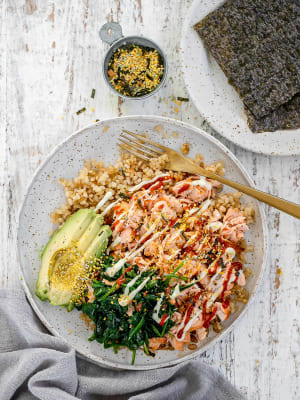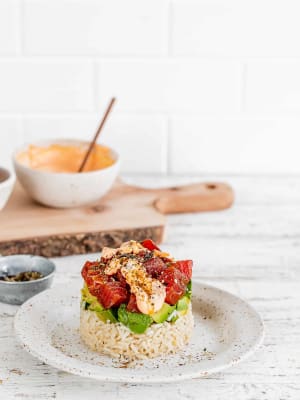5 Green Teas You Simply Must Know

5 Green Teas You Simply Must Know
Discover the diverse world of green teas in our comprehensive guide.
Camellia Sinensis is the name of the plant from which all the main types of green and black tea originate. The differences in the final product lie in growing methods, processing, and fermentation. Some good news is that any camellia you incorporate into your lifestyle will offer significant health benefits.
Caffeine has a way of stealing the limelight from tea’s other offerings, and the unfortunate result is that it’s known as a one-trick pony for putting pep in the morning step. However, teas are much more than a gentler coffee alternative. Whether black, green or in between, they should be properly recognized as the fascinating and powerful health tonics they really are.
For anyone who leans in to listen, the truth about camellia’s proven ability to boost vitality, prevent illness, and slow down the aging process is being shouted from atop mountains of scientific literature and large-scale clinical trials. It’s high time this awareness spread from stiff academic journals into the everyday working world.
The following review will provide a roundup of camellia types to help you hone in on your favourite way to bring more of this underrated medicine into your life.

Sencha
The famous Sencha is the most commonly enjoyed type of green tea across Japan. Premium top leaves and buds are picked, steamed, rolled and dried. Steaming stops the polyphenol oxidase enzyme from degrading the leaves, capturing a perfect moment in time like a photograph. Sencha is essentially high-quality green tea in its most natural, unadulterated state. Sencha could also be green tea at its most caffeine-concentrated- good news for those looking to feel the boost. The mild bitterness and nuanced astringency from a hot cup of sencha are due to its high levels of EGCG and caffeine.
Alternatively, warm or cold water brews will allow sencha’s amino acids, like the anti-stress theanine and immune-supporting vitamin C and EGC, another health-promoting catechin, or polyphenol, similar to EGCG, to take the fore. If you are looking for a no-nonsense exemplar of everything green tea has to offer, a cup of fine sencha might just be all you need.

Genmaicha
Genmaicha is a type of green tea called bancha mixed with toasted brown rice, one of the most commonly brewed varieties in cafes and teahouses. It’s sometimes known informally as ‘popcorn tea’ because some of the rice kernels pop in roasting.
The toasty rice flavour softens and sweetens the flavour profile of the cup, imparting a nutty earthiness all its own. Less pure than sencha due to the rice component, genmaicha has fewer healthy compounds like EGCG and theanine but also less caffeine.
Meanwhile, brown rice has its own anti-inflammatory nutrients, like ellagic acid and gallic acid. So if you’re still new to green tea flavours and want to ease your way in, a warming cup of genmaicha, with a little raw honey added, might be just the ticket.

Matcha
Oat milk lattes are the least of it: matcha is making waves in all sorts of unlikely places, from beer and cheesecake to soap, shampoo and body wash. Beyond any influencer's impact, the ubiquitous presence of this trend can be attributed to matcha’s solubility: it’s the only common version of green tea where the leaves themselves are consumed. This superpower, to vanish into the water completely, is achieved by stone-grinding the finished leaves into an extremely fine neon powder before shipping.
Matcha is essentially a very concentrated version of excellent green tea. An extremely high chlorophyll content affords the eye-popping lime green hue. Matcha also boasts an unparalleled abundance of theanine, a feature affecting its distinct umami flavour and ability to provide clear, calm focus. Theanine is regularly supplemented for sleep, relaxation, or relaxation and works synergistically with caffeine. Look for ‘ceremonial grade’ on the label to be assured of premium quality, minimum possibility of contamination, and fully loaded theanine levels.

White Tea
The palest member of the camellia family, white tea is typically harvested in spring from immature leaves and young, unopened buds with glimmering silver hairs. It then withers for a full 36 hours before being dried. In a sense, this means that white tea is the least processed green tea out there. The minimal processing of white tea translates into an abundance of antioxidant flavonoids and polyphenols, including all the famous catechins like EGCG and EGC. Green tea’s white cousin is also generally lower in tannins, making it easier on the tummy for some.
Notably, white tea’s long withering time allows for partial fermentation. This leads to subtle but significant changes in its chemistry, such as methylated (supercharged) catechins, more bioavailable amino acids, and the creation of compounds called theaflavins associated with oolong and black teas. The result is a very smooth, almost peach-like flavour profile.
Green tea catechins are good for oral health: these unique polyphenols prevent nasty bacteria from adhering to the teeth. Fascinatingly, white tea combines this effect with a bonus- it’s exceptionally high in naturally occurring fluoride, which helps form a protective barrier to keep our pearly whites their pearliest and whitest.

Oolong
Black teas like Earl Grey and Orange Pekoe are also camellia sinensis in another guise, the most significant difference being that they are fully fermented. Tea fermentation converts catechins into different compounds called theaflavins and theasinensins. Consequently, black teas are very high in theaflavins and theasinensins and very low in catechins, whereas green teas are the opposite. Oolong, a partially fermented camellia, occupies the hallowed middle ground between the two and offers many of the three polyphenols: theasinensins, theaflavins, and catechins. In other words, it provides many benefits of green and black tea.
Astoundingly, it even goes beyond that because extracts of oolong polysaccharides and polyphenols have been found to work together synergistically. Operating in concert, the powerful combination of green and black tea polyphenols exhibits multi-pronged antioxidant activity: it does this by providing swarms of direct free radical scavengers and by activating human DNA to create powerful endogenous (homemade) antioxidants like glutathione and superoxide dismutase.
An antimicrobial ally, oolong’s polyphenols increase the effectiveness of antibiotics against nasty bugs like staphylococcus aureus and have their own direct anti-candida activity. The same fantastic mix of tea polyphenols also lowers blood sugar for type 2 diabetes patients and can increase the effectiveness of antihyperglycemic medications.
Generali-teas
Sweeping generalizations can be made about each type of camellia tea. Still, like any fine delicacy, connoisseurs are acutely aware that every variable in soil, horticulture, processing, weather, genetics, and age of the plant results in different resulting chemical compositions and flavour profiles.
One commonality we can feel very good about is that every type of camellia tea listed above fully deserves inclusion in a healthy lifestyle. Check out our article on green tea’s health benefits to geek out on how deserving it is!
Another common thread is that all tea polyphenols are heat-sensitive. So, whatever tea you’re brewing, it’s best to let the water cool somewhat after being boiled.
Quanti-teas
Whether we want to prevent the flu or liver a cancer-free life, several extensive human studies have demonstrated that drinking as many as five cups a day maximizes health benefits from drinking camellia. So, if trusting science is our prerogative, especially for disease prevention, we shouldn’t drink a cup once in a while but rather drink quite a bit of it daily.
Therefore, instead of determining which type of tea is ‘best’ or ‘healthiest,’ you’re better off finding the one you genuinely enjoy without pretending to. If drinking it is a chore, you won’t sustain the habit. But you won't need a reminder if it’s something you love!
And, of course, you don’t need to drink a full five cups a day to start supporting your immune system, lowering systemic inflammation, and helping to prevent more serious illness down the line. Any camellia sinensis is a welcome addition to any of its beloved incarnations.
Arambolkar, V. (n.d.). White tea vs. Matcha Green Tea. which is healthier?. Tea Trunk. https://teatrunk.in/blogs/all/white-tea-vs-matcha-green-which-is-healthier
Clark, M. (2022, July 26). 10 items that prove Matcha Mania has invaded North America. Paste Magazine. https://www.pastemagazine.com/food/matcha/9-items-that-prove-matcha-mania-has-invaded-north#7-matcha-ramen-at-mentoku-new-york-n-y%E2%80%93
Dias, T. R., Tomás, G., Teixeira, N. F., Alves, M. G., Oliveira, P. F., & Silva, B. M. (2013). White tea (camellia sinensis (L.)): Antioxidant properties and beneficial health effects. International Journal of Food Science, Nutrition and Dietetics, 19–26. https://doi.org/10.19070/2326-3350-130005
Everything you need to know about white tea. The Tea Spot. (n.d.). https://www.theteaspot.com/blogs/steep-it-loose/everything-you-need-to-know-about-white-tea#:~:text=%E2%80%9CCatechins%2C%20including%20EGCG%20%5B%E2%80%A6,and%20non%2Dfermented%2C%20respectively
Fasciola, A. (n.d.). Is White Matcha a thing? clearing up a matcha myth. Matcha.com. https://matcha.com/en-ca/blogs/news/is-white-matcha-a-thing-2019
Hilal, Y., & Engelhardt, U. (2007). Characterisation of white tea – comparison to green and black tea. Journal Für Verbraucherschutz Und Lebensmittelsicherheit, 2(4), 414–421. https://doi.org/10.1007/s00003-007-0250-3
Kawarai, T., Narisawa, N., Yoneda, S., Tsutsumi, Y., Ishikawa, J., Hoshino, Y., & Senpuku, H. (2016). Inhibition of streptococcus mutans biofilm formation using extracts from assam tea compared to Green Tea. Archives of Oral Biology, 68, 73–82. https://doi.org/10.1016/j.archoralbio.2016.04.002
Monobe, M. (2018). Health functions of compounds extracted in cold-water brewed green tea from camellia sinensis L. Japan Agricultural Research Quarterly: JARQ, 52(1), 1–6. https://doi.org/10.6090/jarq.52.1
Ng, K.-W., Cao, Z.-J., Chen, H.-B., Zhao, Z.-Z., Zhu, L., & Yi, T. (2017). Oolong tea: A critical review of processing methods, chemical composition, health effects, and risk. Critical Reviews in Food Science and Nutrition, 58(17), 2957–2980. https://doi.org/10.1080/10408398.2017.1347556
Oliveira, P. F., Tomás, G. D., Dias, T. R., Martins, A. D., Rato, L., Alves, M. G., & Silva, B. M. (2015). White tea consumption restores sperm quality in prediabetic rats preventing testicular oxidative damage. Reproductive BioMedicine Online, 31(4), 544–556. https://doi.org/10.1016/j.rbmo.2015.06.021
Raman, R. (2023, July 12). 10 impressive benefits of White Tea. Healthline. https://www.healthline.com/nutrition/white-tea-benefits#TOC_TITLE_HDR_2
Rusak, G., Komes, D., Likić, S., Horžić, D., & Kovač, M. (2008). Phenolic content and antioxidative capacity of green and white tea extracts depending on extraction conditions and the solvent used. Food Chemistry, 110(4), 852–858. https://doi.org/10.1016/j.foodchem.2008.02.072
Staughton, J. (2021, June 24). 7 Proven Benefits of Sencha Tea. Organic Facts. https://www.organicfacts.net/health-benefits/teas/sencha-tea.html
Tounekti, T., Joubert, E., Hernández, I., & Munné-Bosch, S. (2012). Improving the polyphenol content of tea. Critical Reviews in Plant Sciences, 32(3), 192–215. https://doi.org/10.1080/07352689.2012.747384
Undefined. (2022, May 7). White tea vs green tea: Everything you need to know. Teasenz. https://www.teasenz.com/chinese-tea/white-tea-vs-green-tea.html
Weerawatanakorn, M., Hung, W.-L., Pan, M.-H., Li, S., Li, D., Wan, X., & Ho, C.-T. (2015). Chemistry and health beneficial effects of oolong tea and theasinensins. Food Science and Human Wellness, 4(4), 133–146. https://doi.org/10.1016/j.fshw.2015.10.002
Zhang, H., Qi, R., & Mine, Y. (2019). The impact of oolong and black tea polyphenols on human health. Food Bioscience, 29, 55–61. https://doi.org/10.1016/j.fbio.2019.03.009
Zhu, W.-L., Shi, H.-S., Wei, Y.-M., Wang, S.-J., Sun, C.-Y., Ding, Z.-B., & Lu, L. (2012). Green tea polyphenols produce antidepressant-like effects in adult mice. Pharmacological Research, 65(1), 74–80. https://doi.org/10.1016/j.phrs.2011.09.007





